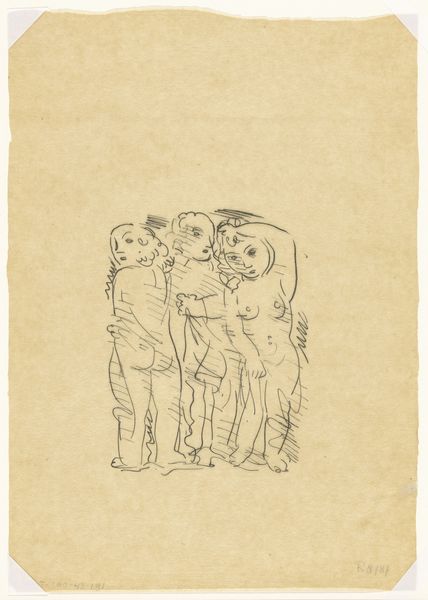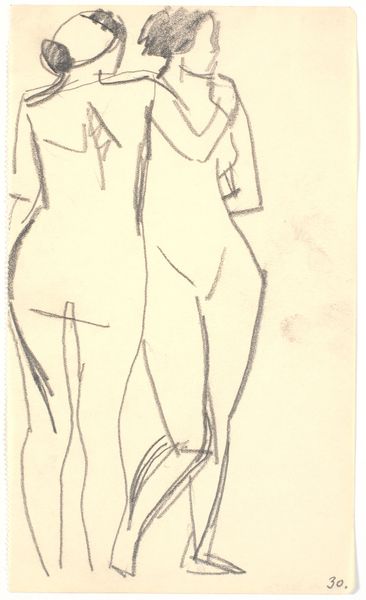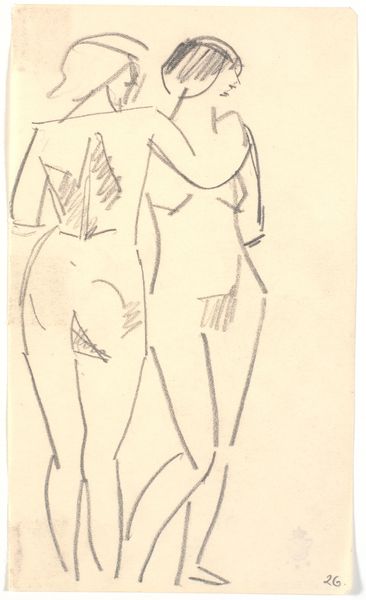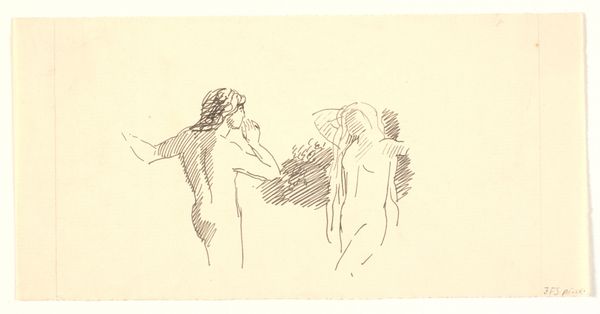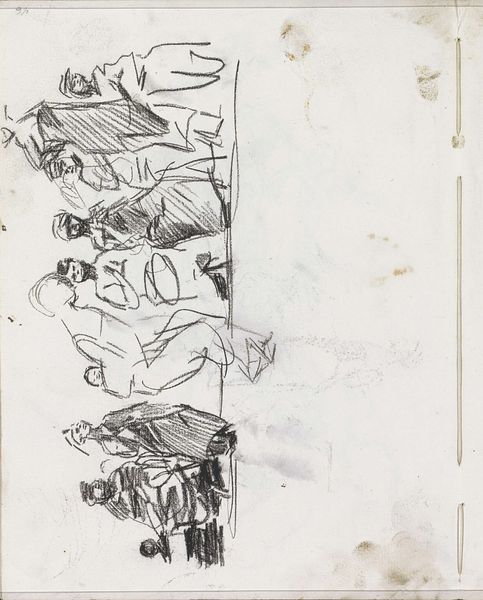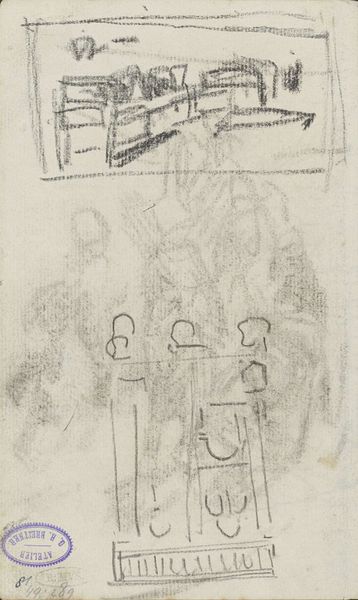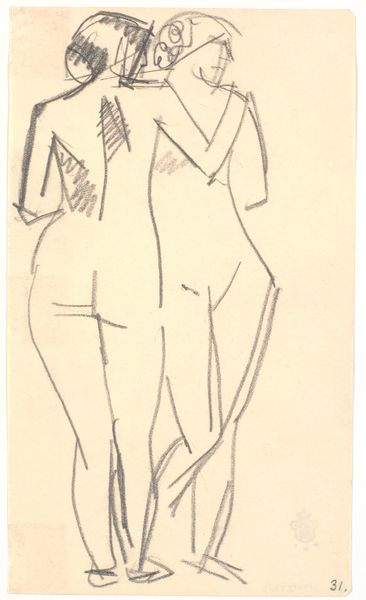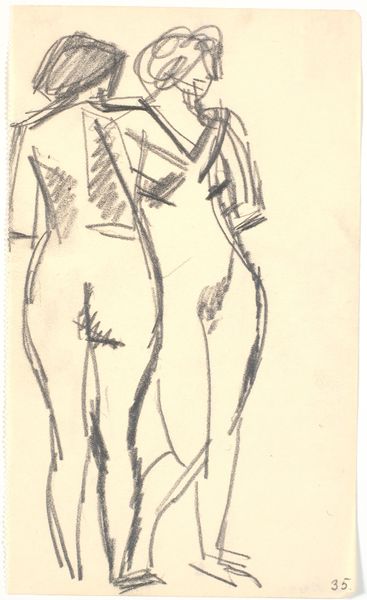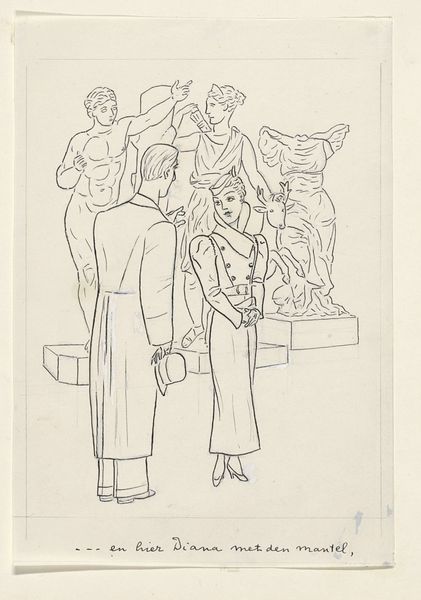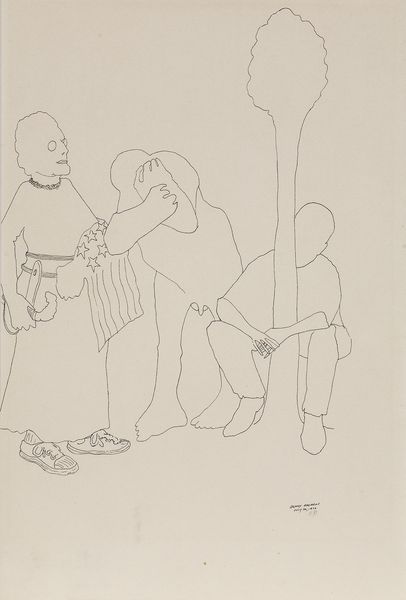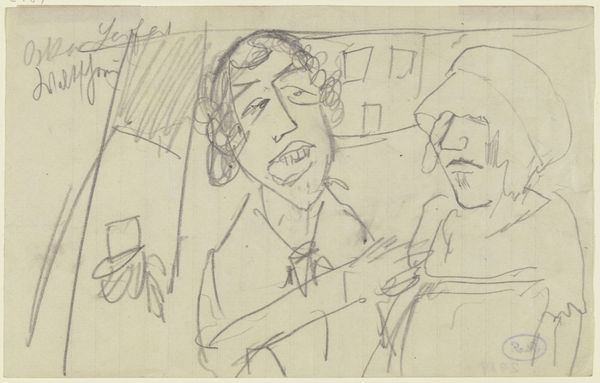
drawing, pencil
#
drawing
#
figuration
#
pencil
#
line
#
nude
#
modernism
Dimensions: height 135 mm, width 197 mm, height 94 mm, width 140 mm
Copyright: Rijks Museum: Open Domain
Curator: Welcome. Here we have Leo Gestel's drawing, "The Three Graces," created circa 1935-1940, rendered in pencil. Editor: My first impression? Stark. The linework is so simple, almost severe, giving the figures a remote, statuesque presence. There's very little in the way of emotional depth at first glance. Curator: Indeed, Gestel focuses on essential forms, reducing the figures to their most basic lines and planes. Notice how he employs subtle shifts in pressure to create depth and volume. Semiotically, each line serves as a concise signifier. Editor: Yet, I can't help but wonder about the context of this piece within the history of representing the Three Graces. Are they a critique of idealized beauty, particularly given the tumultuous socio-political climate of pre-war Europe? Are we meant to consider the lack of joy and abundance traditionally associated with these figures? Curator: One could certainly read it that way. Gestel, known for his modernist explorations, dissects classical tropes through form, and while overt political symbolism may be absent, the flattening effect destabilizes expectations, challenging the viewer. Editor: Perhaps Gestel, grappling with Modernist principles of simplicity and honesty, was implicitly responding to a pervasive gendered visual culture where female bodies were frequently commodified and romanticized. This version rejects all such easy visual pleasure, leaving something unnerving behind. Curator: An interesting interpretation. Formally, the composition guides the eye vertically. The figures are aligned symmetrically and without ornamentation. Editor: This lends a sense of austere solemnity, but perhaps it unintentionally distances viewers from experiencing empathy with these individuals. If Gestel aims to demystify, he might equally deny access, leaving only surface readings, an emptiness. Curator: Gestel’s abstraction resists narrative closure. Its incompleteness allows, if not necessitates, dialogue between work and witness, meaning and materiality, then and now. Editor: Ultimately, the power of this minimalist representation resides in its potential for multifaceted contemporary reinterpretation.
Comments
No comments
Be the first to comment and join the conversation on the ultimate creative platform.
